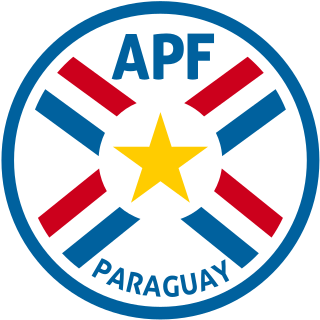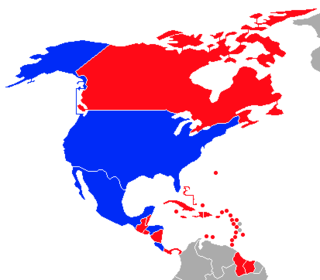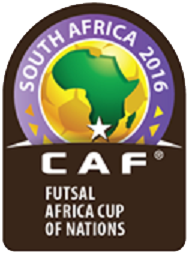
The 2002 FIFA World Cup, also branded as Korea Japan 2002, was the 17th FIFA World Cup, the quadrennial football world championship for men's national teams organized by FIFA. It was held from 31 May to 30 June 2002 at sites in South Korea and Japan, with its final match hosted by Japan at International Stadium in Yokohama.

The 1998 FIFA World Cup was the 16th FIFA World Cup, the football world championship for men's national teams. The finals tournament was held in France from 10 June to 12 July 1998. The country was chosen as the host nation by FIFA for the second time in the history of the tournament, defeating Morocco in the bidding process. It was the second time that France staged the competition and the ninth time that it was held in Europe. Spanning 32 days, it is the longest World Cup tournament ever held.

The 1994 FIFA World Cup was the 15th FIFA World Cup, the world championship for men's national soccer teams. It was hosted by the United States and took place from June 17 to July 17, 1994, at nine venues across the country. The United States was chosen as the host by FIFA on July 4, 1988. Despite soccer's relative lack of popularity in the host nation, the tournament was the most financially successful in World Cup history. It broke tournament records with overall attendance of 3,587,538 and an average of 68,991 per game, marks that stood unsurpassed as of 2022 despite the expansion of the competition from 24 to 32 teams starting with the 1998 World Cup.

The 1970 FIFA World Cup was the ninth edition of the FIFA World Cup, the quadrennial international football championship for men's senior national teams. Held from 31 May to 21 June in Mexico, it was the first World Cup tournament held outside Europe and South America, and it was also the first held in North America. Teams representing 75 nations from all six populated continents entered the competition, and its qualification rounds began in May 1968. Fourteen teams qualified from this process to join host nation Mexico and defending champions England in the 16-team final tournament. El Salvador, Israel and Morocco made their debut appearances at the final stage.

The 1974 FIFA World Cup was the tenth FIFA World Cup, a quadrennial football tournament for men's senior national teams, and was played in West Germany between 13 June and 7 July. The tournament marked the first time that the current trophy, the FIFA World Cup Trophy, created by the Italian sculptor Silvio Gazzaniga, was awarded. The previous trophy, the Jules Rimet Trophy, had been won for the third time by Brazil in 1970 and awarded permanently to the Brazilians. This was the first out of three World Cups to feature two rounds of group stages.

The 1982 FIFA World Cup was the 12th FIFA World Cup, a quadrennial football tournament for men's senior national teams, and was played in Spain between 13 June and 11 July 1982. The tournament was won by Italy, who defeated West Germany 3–1 in the final, held in the Santiago Bernabéu Stadium in the capital, Madrid. It was Italy's third World Cup title, but their first since 1938. The defending champions, Argentina, were eliminated in the second round. Algeria, Cameroon, Honduras, Kuwait and New Zealand made their first appearances in the finals.

The 1990 FIFA World Cup was the 14th FIFA World Cup, a quadrennial football tournament for men's senior national teams. It was held from 8 June to 8 July 1990 in Italy, the second country to host the event for a second time. Teams representing 116 national football associations entered and qualification began in April 1988. 22 teams qualified from this process, along with host nation Italy and defending champions Argentina.

The Paraguay national football team represents Paraguay in men's international football competitions, and are controlled by the Paraguayan Football Association. Paraguay is a member of CONMEBOL. Their nickname is the Albirroja, or red and white. The Albirroja has qualified for eight FIFA World Cup competitions, with their best performance coming in 2010 when they reached the quarter-finals. A regular participant at the Copa América, Paraguay have been crowned champions of the competition on two occasions. Paraguay's highest FIFA World Rankings was 8th and their lowest was 103. Paraguay was awarded second place with Best Move of the Year in 1996 for their rise in the FIFA Rankings.

The 2009 FIFA Confederations Cup was the eighth Confederations Cup, and was held in South Africa from 14 June to 28 June 2009, as a prelude to the 2010 FIFA World Cup. The draw was held on 22 November 2008 at the Sandton Convention Centre in Johannesburg. The opening match was played at Ellis Park Stadium in Johannesburg. The tournament was won by Brazil, who retained the trophy they won in 2005 by defeating the United States 3–2 in the final.
Qualifying for the 2010 FIFA World Cup was a series of tournaments organised by the six FIFA confederations. Each confederation – the AFC (Asia), CAF (Africa), CONCACAF, CONMEBOL, OFC (Oceania), and UEFA (Europe) – was allocated a certain number of the 32 places at the tournament. A total of 205 teams entered the qualification competition, with South Africa, as the host, qualifying for the World Cup automatically. The first qualification matches were played on 25 August 2007 and qualification concluded on 18 November 2009. Overall, 2,338 goals were scored over 852 matches, scoring on average 2.74 per match.

The CONCACAF qualification for the 2014 FIFA World Cup consisted of four rounds of competition, in which the 35 member nations competed for three automatic berths at the finals in Brazil.
The UEFA Euro 2016 qualifying tournament was a football competition that was played from September 2014 to November 2015 to determine the 23 UEFA member men's national teams joining the automatically qualified host team France in the UEFA Euro 2016 final tournament.

The association football tournament at the 2020 Summer Olympics was held from 21 July to 7 August 2021 in Japan.
The final draw for the 2014 FIFA World Cup took place on 6 December 2013 at the Costa do Sauípe Resort, Mata de São João in Bahia, at 13:00 local time (UTC−3). The ceremony determined the group in which the 32 participating teams would begin the final tournament. The teams were divided in advance by FIFA into four pots based on seedings and geographic regions.

The 2016 Africa Futsal Cup of Nations was the 5th edition of the Africa Futsal Cup of Nations, the quadrennial international futsal championship organised by the Confederation of African Football (CAF) for the men's national teams of Africa. The tournament was held in South Africa between 15–24 April 2016. A total of eight teams played in the tournament.
The European qualifying competition for the 2019 FIFA Women's World Cup was a women's football competition that determined the eight UEFA teams joining the automatically qualified hosts France in the final tournament.
The European section of the 2022 FIFA World Cup qualification acted as qualifiers for the 2022 FIFA World Cup, to be held in Qatar, for national teams that are members of the Union of European Football Associations (UEFA). A total of 13 slots in the final tournament were available for UEFA teams.
The 2023 Africa Cup of Nations qualification matches are currently being organized by the Confederation of African Football (CAF) to decide the participating teams of the 2023 Africa Cup of Nations in Ivory Coast, the 34th edition of the international men's football championship of Africa. A total of 24 teams will qualify to play in the final tournament, including Ivory Coast, who qualify automatically as hosts.
The draw for the 2022 FIFA World Cup took place on 1 April 2022 at the Exhibition and Convention Center in Doha, Qatar. It set the stage for the round-robin group stage in Qatar, whence the World Cup will be played. The teams were divided into four pots of eight, with one team selected from each pot to form a group.
The draw for the 2023 FIFA Women's World Cup took place at the Aotea Centre in Auckland, New Zealand on 22 October 2022. It determined the group stages for the 32 qualified competing teams at the Women's World Cup staged in Australia and New Zealand. The teams were divided into four pots of eight, with one team selected from each pot to form a group.











